A Guide to Camping, Paddling, and Wildlife at Umbagog National Wildlife Refuge
07th November 2021
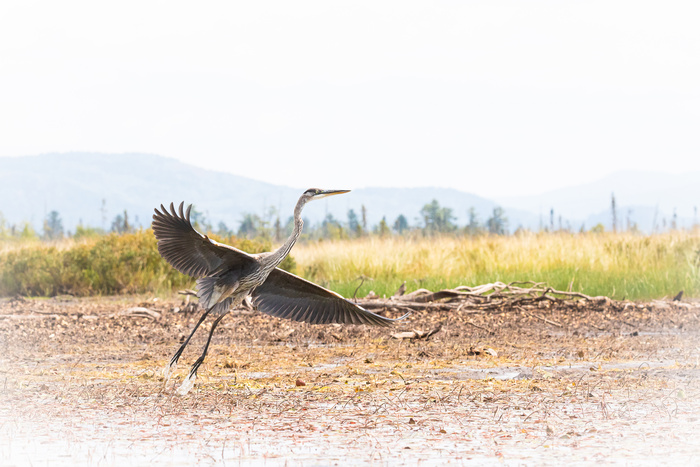
Imagine a place in New England where you can legally camp on an island all by yourself, listening to the cry of the loon and waves at night.
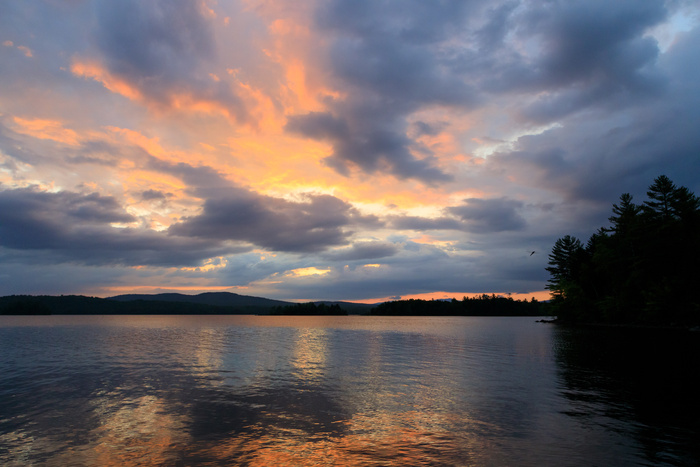
Imagine that you could almost guarantee yourself time with bald eagles.
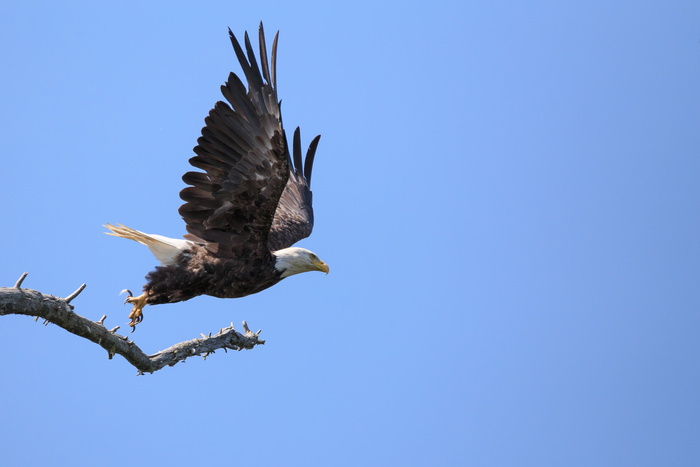
Imagine that you could paddle two major rivers, lined with spruce,
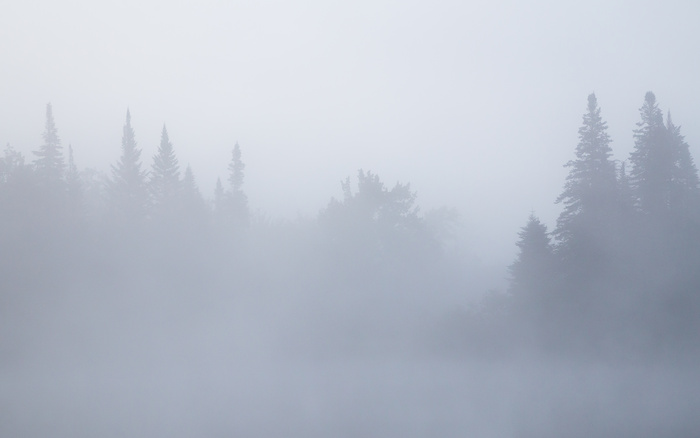
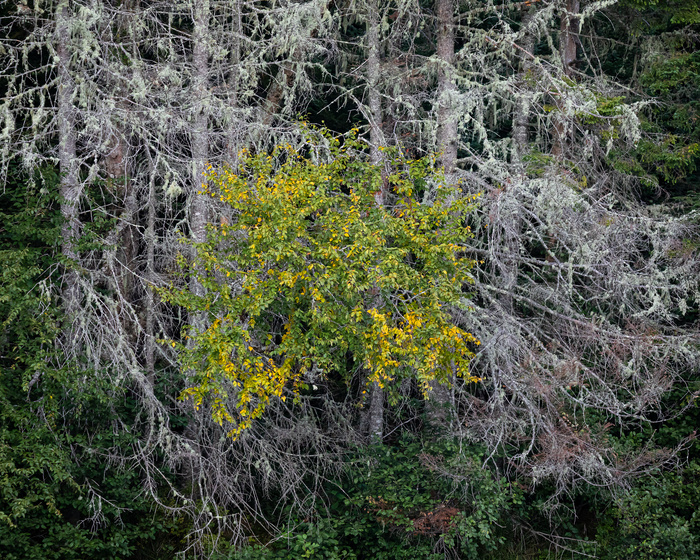
and detour down quiet backwater meadows filled with 200 species of birds, 100 of whom nest there.
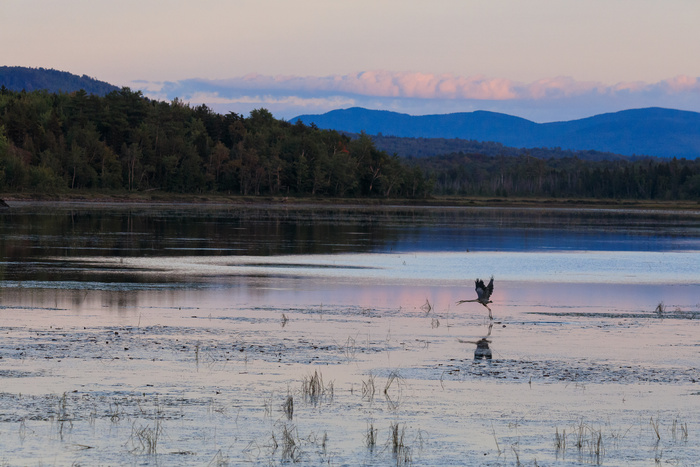
You are imagining Umbagog National Wildlife Refuge, in the northern reaches of New Hampshire and Maine, just shy of the Canadian Border.
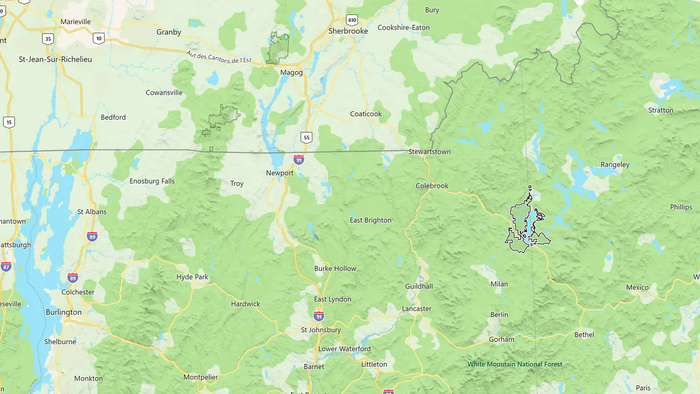
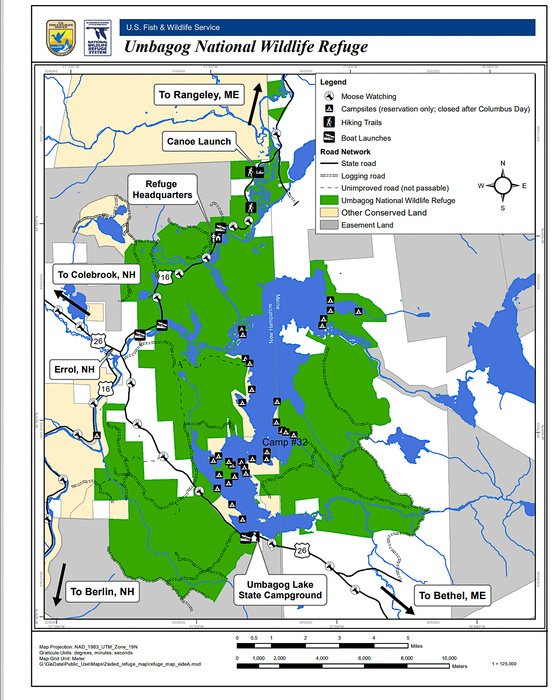
U.S. Fish and Wildlife Service Map of refuge land
Curious about how to experience all of these things at the refuge? Read on to learn about my 3 favorite adventures at Umbagog National Wildlife Refuge!
Adventure 1: Solo kayak camping on a backcountry island.
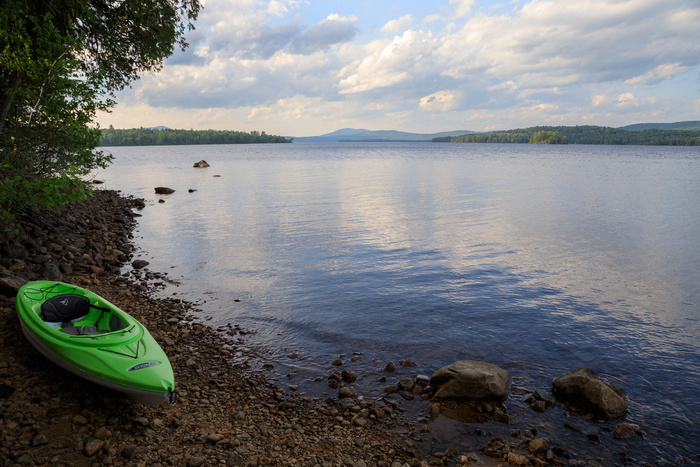
If you have ever dreamed of having an island to yourself, Umbagog is the place to fulfill that dream. New Hampshire State Parks maintains 33 remote campsites available by reservation, Memorial Day weekend through early October. The sites usually fill up fast, so reserve in advance.
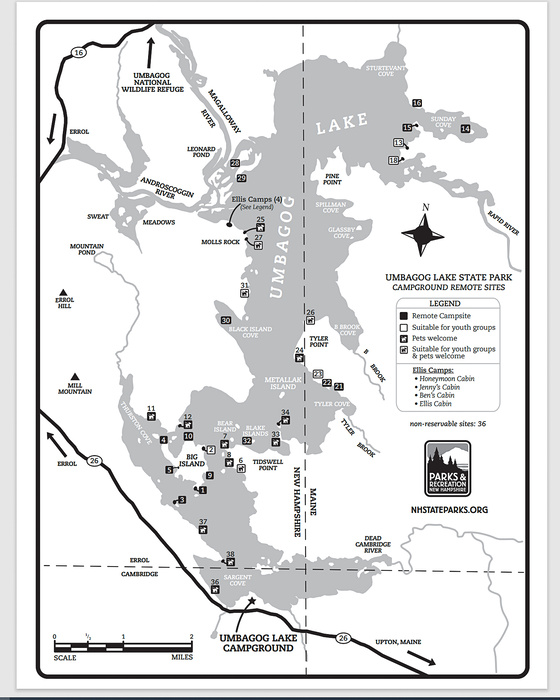
NH State Parks Campsite Map
Perhaps the most coveted are the island campsites, like campsite #32, which I got to camp at this past summer. It was total luck that I got this site, which has been featured in Backpacker magazine. The day before I was looking for something to do and noticed that there must have been a cancelation for the next day and booked it instantly! The whole rest of the summer was filled. It is a beautiful one acre island that is about 4 miles from the parking and put in at Umbagog State Park on the south shore of the lake.
There are a few important things to realize about paddling out on the big open Lake Umbagog to get to these sites. It is rough paddling! If you have never paddled on a big, shallow open lake like this before, I wouldn't make getting a camping load out your first experience. There are routinely good size waves that typically roll at you from the west due to the cross wind and motor boats that are also allowed to use the lake. When waves or wakes are about to break on you, you need to turn your kayak into the breaking wave and not get hit from the side. This can make progress slow, because you will often have to interrupt your linear progress to turn west. Also check the wind and thunderstorm forecast. I paddled out in 10 to 15 mile per hour winds and it was tough and at the edge of what I would do. Anything higher and I wouldn't do it.
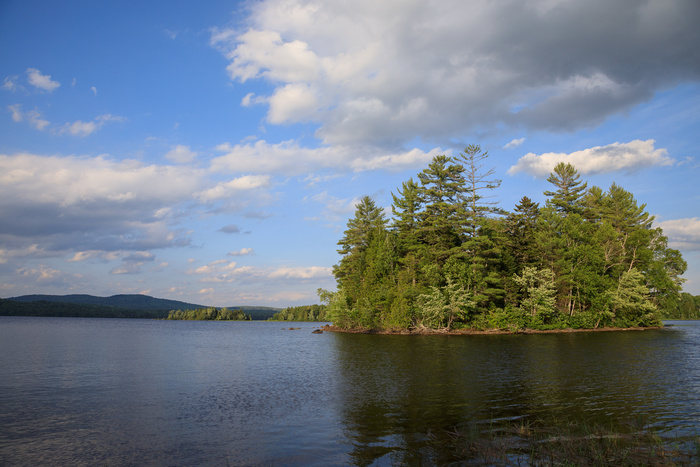
Once I was at the island, I was all alone. Very little boat traffic came by in this area that feel tucked away in a cove. What did I do for 24 hours by myself on an island? There was so much wildlife to observe!
A flock of cedar waxwings were my constant companions eating fruiting berries.
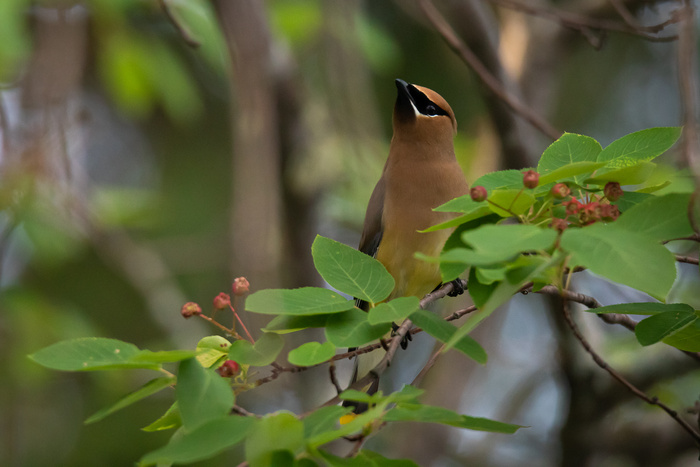
You can see how they got their name "Cedar Waxing" in this shot: the tips of the tail and wing looked dipped in colorful candlewax and this bird is sitting in a northern white cedar tree!
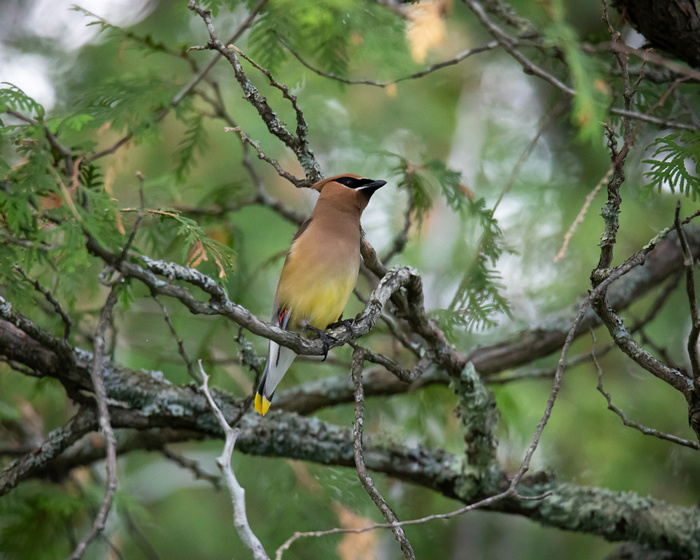
I even observed one flying down to the rocky beach to pick up a stone. I wondered why? For its gizzard?
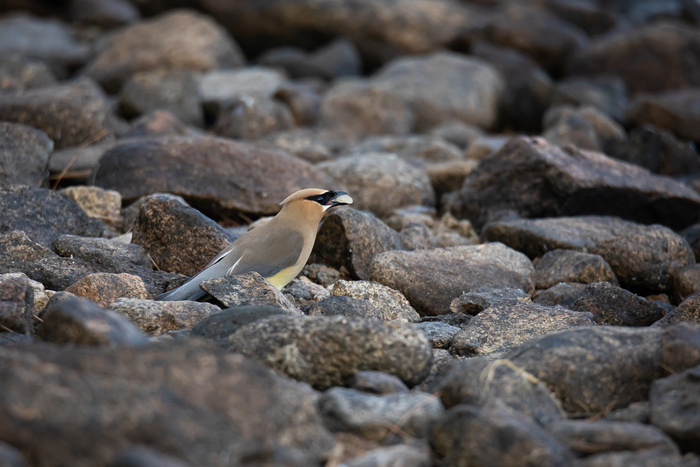
A pair of loons swam around the island.
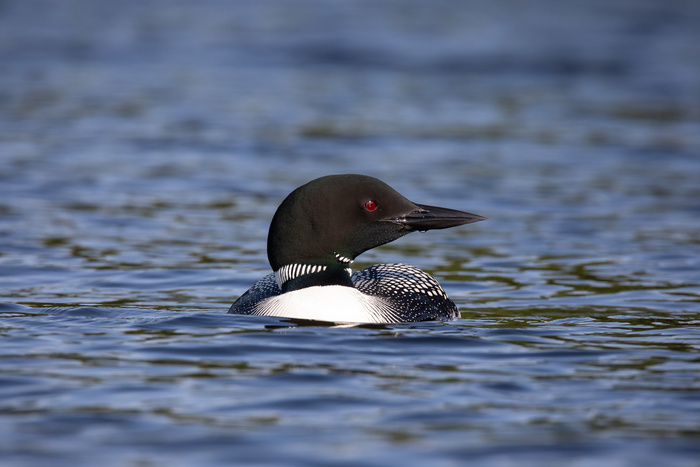
I enjoyed listening to their haunting cry at sunset:
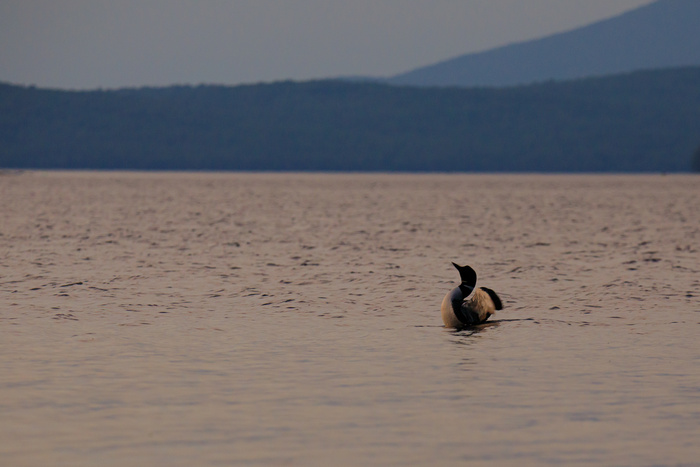
Adventure 2: Finding and Photographing Bald Eagles at Umbagog National Wildlife Refuge
Every time I have visited the refuge, I have found many bald eagles. Several of the roughly 80 pairs that nest in New Hampshire nest here. The Androscoggin River (refer to previous maps) is probably the easiest place to see them and photograph them. You may be able to observe them from roadside pullouts along the river, but it is best to go paddle it to find them. Unlike Lake Umbagog, which is miles wide, the river is only about 100 yards wide at most,
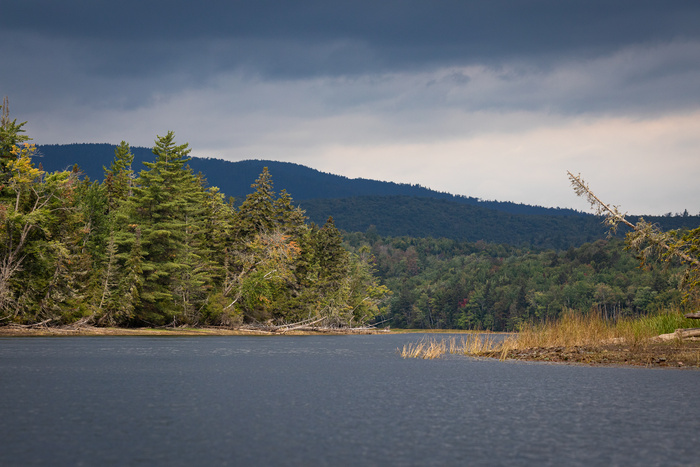
so finding bald eagles perched on trees and getting closer is much easier.
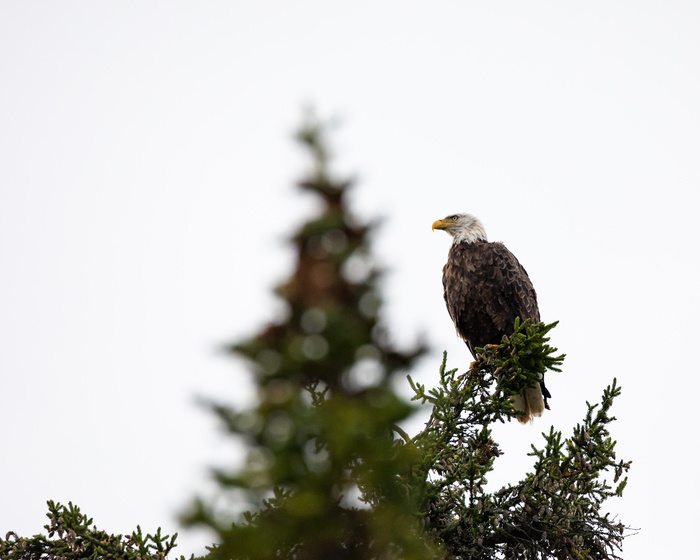
That’s not to say you won't find eagles on Lake Umbagog itself. You will. When camping at site #32, I noticed an adult bald eagle roosting on another island. I observed him flying into a cove when I was out for an evening paddle photographing loons and decided to follow.
Bald Eagle flying above Lake Umbagog:
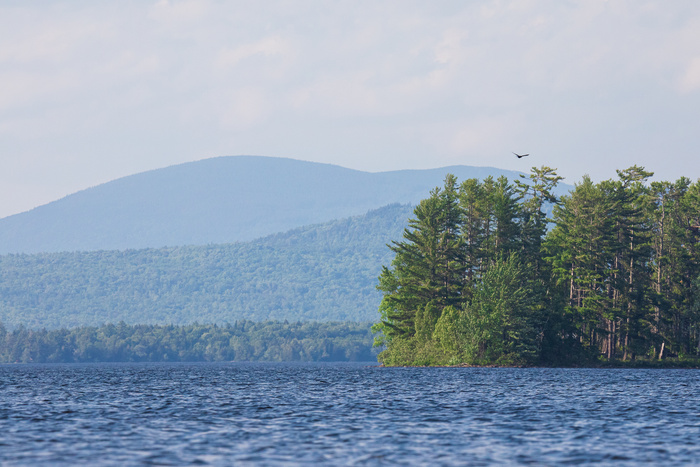
Sure enough, when I entered his secluded cove he spotted me and took flight. I was ready my camera settings dialed in beforehand and got this nice flight shot.
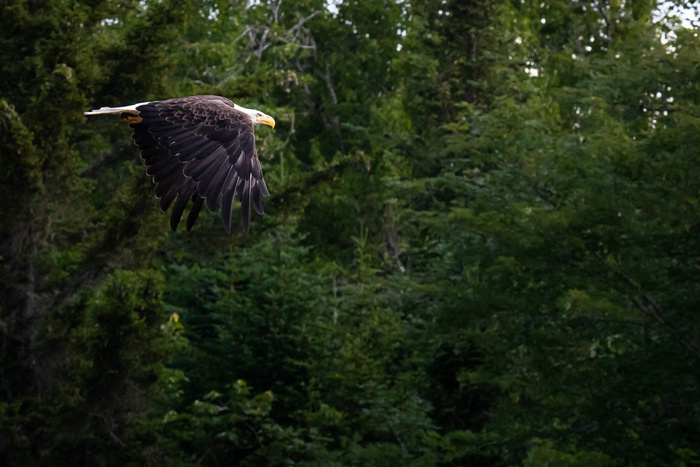
Adventure #3: Paddling the Androscoggin River to quiet backwater meadows teeming with hundreds of species of birds.
A paddle starting at the Diamond Steamer Boat Launch on Route 16 heading upstream on the Androscoggin River is my favorite paddling in the area. Yes, you can paddle both against the current (heading in towards the lake) and obviously with the current back. No need to set up a shuttle. The best part of this paddle is exploring the two broad calm bodies of water known as meadows, where you find the greatest array of the refuge's biodiversity.
Harper’s Meadow:
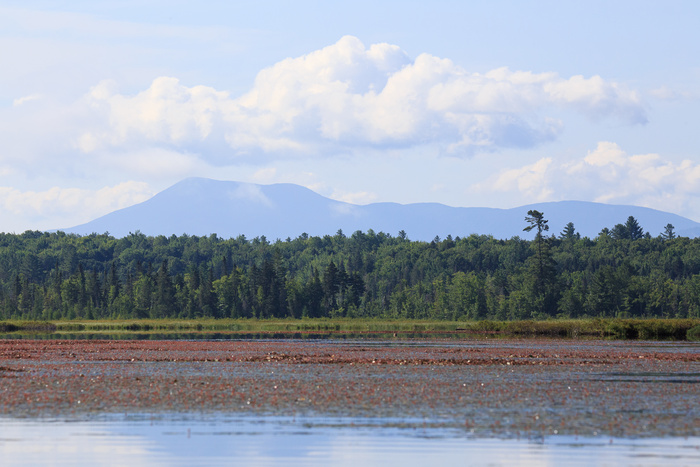
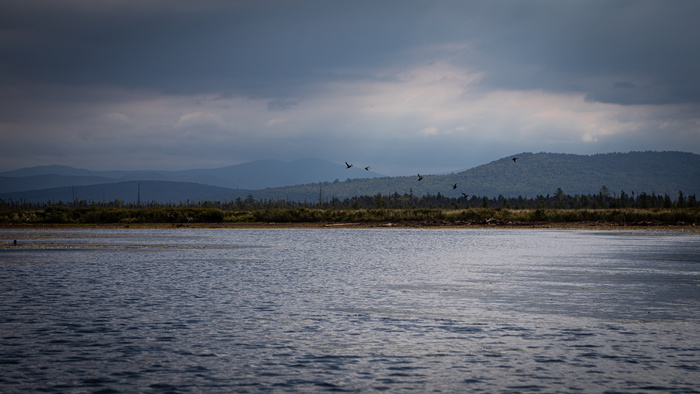
Sweet Meadows:
Depending on the season, I have observed ospreys, harrier hawks, peregrine falcons, yellow legs, great egrets, and all kinds of warblers, woodpeckers, and waterfowl.
The most common species you will find is the great blue heron.
Great Blue Heron stalking:
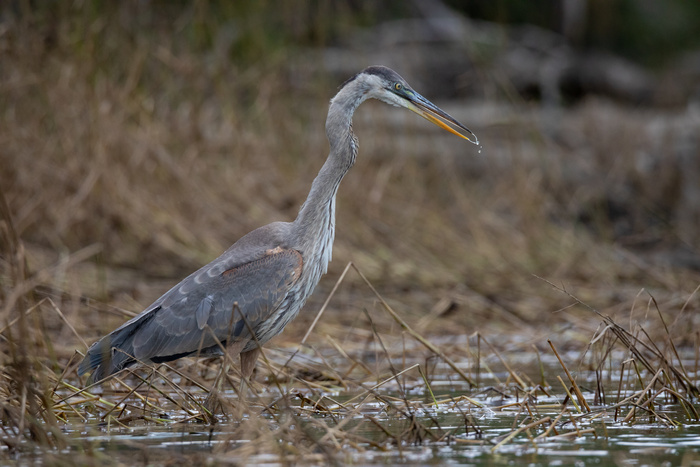
Sometimes this common species displays some interesting behavior. These two great blue herons in Harper's Meadow appeared to dance for 10 minutes in September:
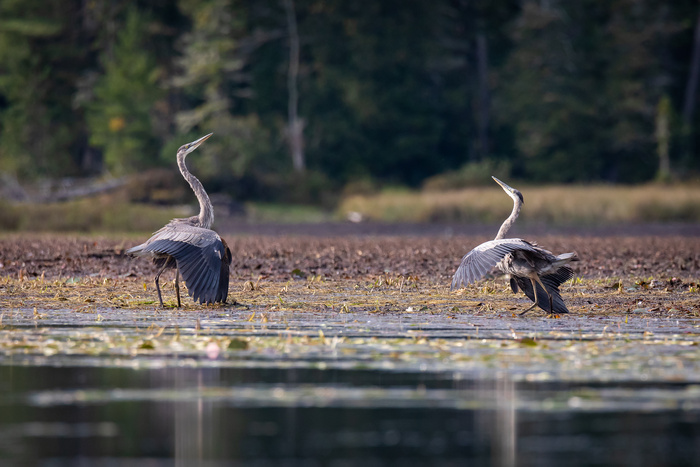
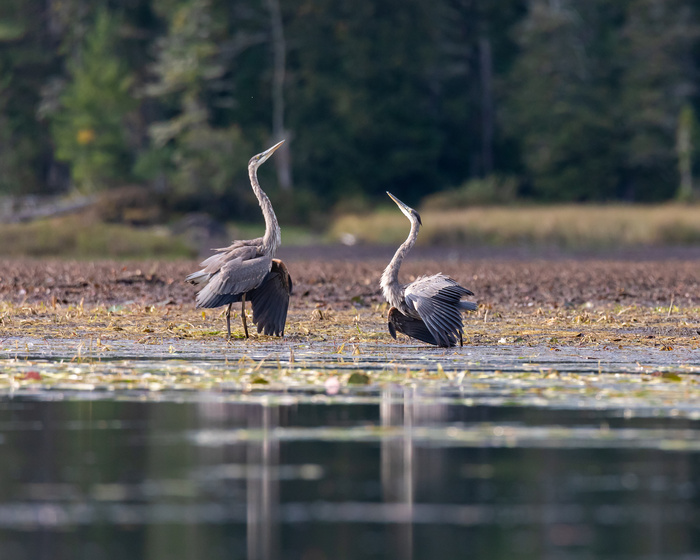
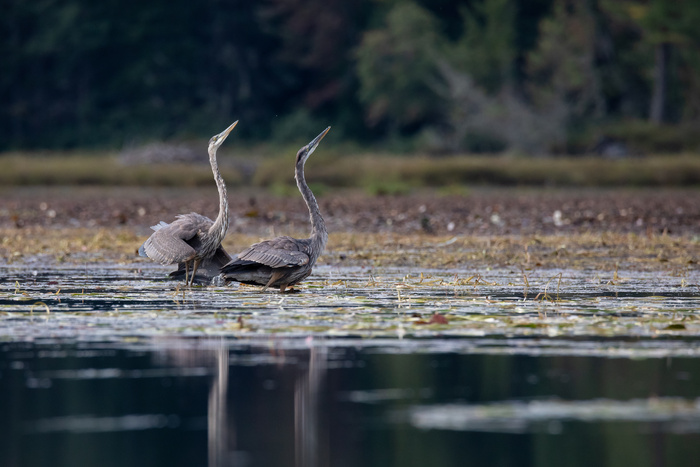
Fall obviously isn't mating season, and these two didn't fight, so I am still not sure to this day what they were doing.
You never know what you will find out there! Maybe even a moose along the shore. Hopefully this article inspired you to explore this lesser-known National Wildlife Refuge. Please leave no trace and observe a quiet wilderness ethic so others can enjoy peace and solitude as well. The wildlife will thank you too!